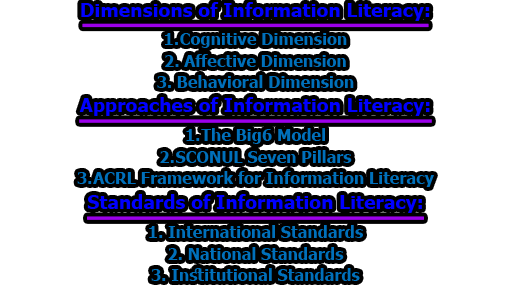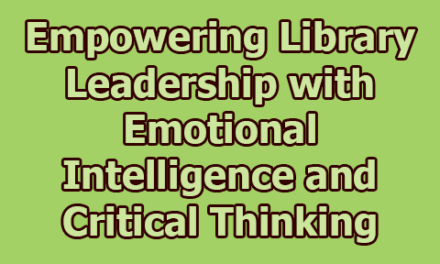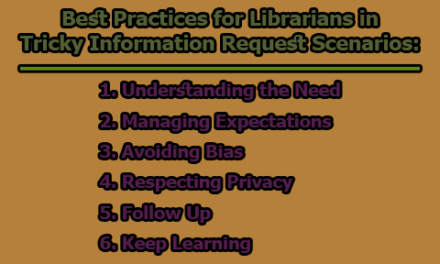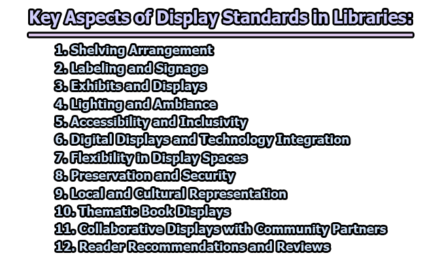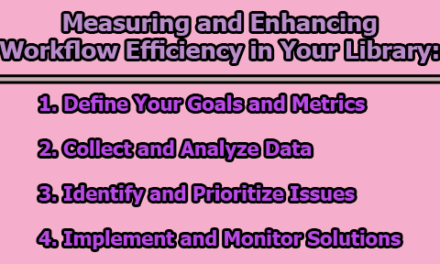Dimensions, Approaches, and Standards of Information Literacy:
Information literacy is a critical skill set necessary for individuals to navigate the vast amount of information available in today’s digital age. In the rest of this article, we are going to explore the dimensions, approaches, and standards of information literacy.
Definition of information literacy:
Information literacy refers to the set of skills, knowledge, and attitudes required to effectively identify, evaluate, interpret, and use information. It involves the ability to critically assess information sources, understand their context, and apply the information appropriately.
Importance of information literacy in different contexts:
In academic settings, information literacy equips students with the skills necessary for research, critical thinking, and academic success.
In the workplace, it enables employees to find, evaluate, and use information effectively, contributing to their professional growth and decision-making.
In civic participation, information literacy empowers individuals to engage with and critically analyze information to make informed decisions as responsible citizens.
Dimensions of Information Literacy:
Information literacy encompasses various dimensions that collectively contribute to an individual’s ability to effectively access, evaluate, interpret, and use information. These dimensions encompass cognitive, affective, and behavioral aspects of information literacy, enabling individuals to develop critical thinking skills, engage with information on an emotional level, and adopt ethical and effective information-seeking behaviors. The dimensions of information literacy include:
1. Cognitive Dimension: The cognitive dimension of information literacy focuses on the development of critical thinking and analysis skills. It enables individuals to approach information critically, evaluate its credibility and relevance, and make informed decisions based on evidence. Key aspects of the cognitive dimension include:
a. Critical thinking and analysis skills: Information literacy empowers individuals to think critically and analyze information sources, claims, and arguments. Critical thinking skills involve the ability to assess the reliability, accuracy, bias, and validity of information. Individuals learn to identify logical fallacies, evaluate evidence, and recognize the strengths and weaknesses of different perspectives.
b. Evaluation and interpretation of information: Information literacy equips individuals with the skills to evaluate and interpret information effectively. This includes assessing the quality, relevance, and authority of information sources, as well as understanding the context in which the information was created. Individuals learn to synthesize information from multiple sources, identify patterns, and draw evidence-based conclusions.
2. Affective Dimension: The affective dimension of information literacy focuses on the emotional and personal aspects of engaging with information. It encourages individuals to develop an awareness of their own biases, values, and emotional responses to information. Key aspects of the affective dimension include:
a. Awareness of personal biases and values: Information literacy promotes self-reflection and recognition of personal biases and values that may influence the interpretation and use of information. Individuals develop an understanding of their own cultural, social, and cognitive biases, allowing them to approach information with greater objectivity. This awareness facilitates critical thinking and the ability to consider multiple perspectives.
b. Emotional engagement with information: Information literacy encourages individuals to engage with information on an emotional level. It promotes curiosity, empathy, and ethical responsibility in the pursuit and use of information. By developing an emotional connection to information, individuals become more motivated to seek knowledge, explore diverse viewpoints, and engage in meaningful dialogue.
3. Behavioral Dimension: The behavioral dimension of information literacy focuses on the practical skills and behaviors necessary for effective information seeking and use. It encompasses strategies for locating, retrieving, and ethically using information. Key aspects of the behavioral dimension include:
a. Search strategies and information retrieval: Information literacy equips individuals with strategies for conducting effective searches and retrieving relevant information. This includes developing skills in selecting appropriate keywords, using advanced search features, and evaluating search results for relevance and reliability. Individuals learn to navigate databases, search engines, and other information sources efficiently, ensuring they can access the information they need.
b. Ethical use of information: Information literacy emphasizes ethical considerations in the use and sharing of information. It promotes an understanding of copyright, intellectual property rights, and fair use principles. Individuals learn to appropriately cite and attribute sources, avoid plagiarism, and respect the intellectual property of others. Ethical use of information also involves understanding privacy and confidentiality issues in the digital age.
By addressing these dimensions of information literacy, individuals develop the skills, attitudes, and behaviors necessary to navigate the vast information landscape effectively. Information literacy empowers individuals to critically engage with information, make informed decisions, and become lifelong learners in an increasingly complex and rapidly evolving world.
Approaches to Teaching Information Literacy:
Teaching information literacy is essential for equipping individuals with the necessary skills and competencies to navigate the complex and ever-expanding information landscape. Various approaches have been developed to effectively teach information literacy, including the Big6 model, SCONUL Seven Pillars, and the ACRL Framework for Information Literacy. These approaches provide structured frameworks, strategies, and concepts to guide educators in designing and delivering information literacy instruction.
1. The Big6 Model: The Big6 model is a widely recognized and utilized approach to information problem-solving. Developed by Michael B. Eisenberg and Robert E. Berkowitz, the Big6 model consists of six steps that guide learners through the research process. These steps are:
a. Task Definition: Students identify their information needs, define their research question or problem, and establish the purpose and scope of their inquiry. This step involves clarifying the requirements and objectives of the research task.
b. Information-Seeking Strategies: Students develop effective strategies for locating and accessing information relevant to their research question. They learn to select appropriate search tools and techniques, such as library catalogs, databases, and search engines, and develop search queries using relevant keywords.
c. Location and Access: Students use their chosen search strategies to locate and retrieve information from various sources, both print and digital. They critically evaluate the relevance, credibility, and quality of the information sources they encounter.
d. Use of Information: Students analyze and evaluate the information they have gathered, considering its accuracy, reliability, and biases. They synthesize and integrate the information to address their research question, draw conclusions, and develop insights.
e. Synthesis: Students organize and synthesize the information they have collected to create new knowledge or solutions. They develop logical and coherent arguments, apply critical thinking skills, and make connections between different pieces of information.
f. Evaluation: Students assess their own research process, the quality of their information, and the effectiveness of their final product. They reflect on their strengths and areas for improvement, considering the success of their research in meeting their objectives.
The Big6 model provides a systematic and structured approach to information problem-solving, empowering students to navigate the research process effectively and develop critical thinking skills.
2. SCONUL Seven Pillars: The SCONUL Seven Pillars model, developed by the Society of College, National, and University Libraries in the UK, provides a comprehensive framework for information literacy. It comprises seven interrelated elements or pillars that reflect the stages of the information-seeking process. These pillars are:
a. Recognizing the Need: Students develop an understanding of their information needs, recognizing when they require information to address a question or problem. They learn to define their research objectives and identify gaps in their knowledge.
b. Defining: Students establish the scope and parameters of their research, refining their research question or problem and setting clear objectives. They consider the context and purpose of their research, ensuring they have a focused and well-defined approach.
c. Planning: Students develop effective strategies for their information search, considering different sources, tools, and techniques. They create search plans, outlining the key concepts, keywords, and search strategies they will employ.
d. Gathering: Students locate and access relevant information sources, applying their search strategies and evaluating the credibility, relevance, and authority of the sources they encounter. They critically appraise the information they find, selecting and retrieving the most appropriate sources.
e. Evaluating: Students critically evaluate the information they have gathered, considering its reliability, accuracy, and bias. They assess the quality and relevance of the information in relation to their research objectives and question.
f. Managing: Students organize and manage the information they have collected, ensuring effective storage, retrieval, and citation. They develop strategies for organizing their research materials and citing sources appropriately.
g. Presenting: Students effectively communicate and present their findings, using appropriate formats and methods. They consider their target audience, choose the most suitable means of presentation, and structure their arguments and ideas logically.
The SCONUL Seven Pillars model provides a holistic and sequential approach to information literacy, guiding students through the entire research process and promoting critical thinking and effective information management.
3. ACRL Framework for Information Literacy: The ACRL Framework for Information Literacy, developed by the Association of College and Research Libraries, offers a conceptual approach to information literacy instruction. It focuses on the development of critical thinking skills, metacognition, and the ability to navigate information in various contexts. The framework introduces six threshold concepts and associated knowledge practices and dispositions:
a. Authority Is Constructed and Contextual: Students understand that authority is contextual and constructed within specific disciplinary and societal contexts. They critically evaluate and analyze the sources of information, considering the expertise, biases, and credibility of authors and institutions.
b. Information Creation as a Process: Students recognize that information is created through various processes and mediums. They explore the different forms of information, such as scholarly articles, websites, and social media posts, and critically evaluate the characteristics and purpose of these sources.
c. Information Has Value: Students understand the ethical, economic, and social dimensions of information. They recognize the importance of respecting intellectual property rights, citing sources appropriately, and understanding issues of access and information equity.
d. Research as Inquiry: Students engage in research as an iterative and inquiry-based process. They develop strategies for formulating research questions, seeking multiple perspectives, and evaluating the relevance and reliability of information sources.
e. Scholarship as Conversation: Students recognize that scholarly conversations occur within disciplines and communities. They learn to participate in these conversations by critically engaging with information, contributing to discussions, and understanding the norms and conventions of different disciplines.
f. Searching as Strategic Exploration: Students develop effective search strategies and techniques to navigate the complex information landscape. They critically evaluate search results, refine their searches, and adapt their strategies based on their information needs.
The ACRL Framework for Information Literacy emphasizes the integration of information literacy within disciplinary and interdisciplinary contexts, promoting critical thinking, inquiry, and engagement with information in a meaningful way.
These approaches to teaching information literacy provide educators with valuable frameworks, strategies, and concepts to guide their instructional practices. By adopting these approaches, educators can effectively empower students to develop the necessary skills, attitudes, and behaviors for navigating the information landscape, critically engaging with information, and becoming lifelong learners.
Standards and Guidelines for Information Literacy:
Standards and guidelines for information literacy serve as frameworks that define the knowledge, skills, and competencies individuals should acquire to become information literate. These standards provide guidance to educators, librarians, and institutions in developing curricula, designing instructional programs, and assessing information literacy outcomes. Several organizations have developed comprehensive sets of standards and guidelines for information literacy, including the International Federation of Library Associations and Institutions (IFLA), and UNESCO.
1. International Federation of Library Associations and Institutions (IFLA) Information Literacy Standards: IFLA has developed a set of information literacy standards that provide a comprehensive framework for information literacy education. The IFLA Information Literacy Standards encompass five key areas:
- Define: This standard focuses on understanding the information need and defining the research question or problem. It emphasizes the importance of clearly defining the scope, purpose, and objectives of the research.
- Find: This standard highlights the skills and strategies required to locate and access information effectively. It includes selecting appropriate search tools, using advanced search techniques, and critically evaluating search results.
- Evaluate: This standard emphasizes the critical evaluation of information sources for credibility, reliability, and relevance. It encourages individuals to assess the authority, accuracy, currency, and bias of information.
- Use: This standard addresses the skills necessary for effectively using and synthesizing information. It includes analyzing, interpreting, and synthesizing information to address the research question or problem and make evidence-based conclusions.
- Manage: This standard focuses on the organization, management, and ethical use of information. It includes strategies for citing sources, managing references, and respecting intellectual property rights.
The IFLA Information Literacy Standards provide a comprehensive framework that encompasses the entire information literacy process, from defining the research question to effectively using and managing information.
2. UNESCO Information Literacy Guidelines: UNESCO has developed a set of Information Literacy Guidelines that provide a global framework for information literacy education. The UNESCO guidelines encompass five key areas:
- The Information Society: This area emphasizes understanding the concept of the information society, its impact on individuals and communities, and the role of information literacy in empowering individuals in the digital age.
- Information Literacy in Education: This area focuses on integrating information literacy into formal and informal education settings. It emphasizes the importance of information literacy instruction across various educational levels and disciplines.
- Information Literacy for All: This area highlights the importance of ensuring equitable access to information and promoting information literacy among all individuals, including marginalized and underserved populations.
- Information Literacy in the Workplace: This area recognizes the significance of information literacy in the workplace, emphasizing the skills and competencies necessary for individuals to effectively access, evaluate, and use information in professional contexts.
- Information Literacy in the Community: This area promotes the integration of information literacy into community settings, including libraries, public institutions, and non-governmental organizations. It emphasizes the role of information literacy in fostering active citizenship and lifelong learning.
The UNESCO Information Literacy Guidelines provide a global perspective on information literacy, emphasizing its relevance and importance across different domains of life.
3. National Information Literacy Frameworks: In addition to the international standards and guidelines, many countries have developed their own national frameworks for information literacy. These frameworks provide localized guidance and recommendations for incorporating information literacy into educational systems. They often consider specific cultural, social, and educational contexts.
For example, the United Kingdom has the Researcher Development Framework, which includes information literacy as a core competency for researchers. Australia has the Australian and New Zealand Information Literacy Framework, which provides a comprehensive set of standards for information literacy across various educational levels. These national frameworks serve as valuable resources for educators and institutions within specific countries, ensuring that information literacy is aligned with national educational goals and priorities.
4. Discipline-Specific Standards: Information literacy is not limited to general research skills but also extends to discipline-specific knowledge and competencies. Many academic disciplines have developed their own standards and guidelines for information literacy to address the unique information needs and practices within those fields.
For instance, the sciences have the Information Literacy Standards for Science and Engineering/Technology developed by the Association of College and Research Libraries. These standards focus on the specific information sources, research methods, and critical evaluation skills relevant to scientific disciplines.
Similarly, the humanities and social sciences have their own sets of standards, such as the History Information Literacy Standards developed by the American Historical Association. These standards address the unique challenges and resources encountered in historical research.
Discipline-specific standards for information literacy ensure that students in different academic disciplines develop the necessary skills and knowledge to navigate and critically engage with information specific to their fields.
5. School-Level Information Literacy Standards: Recognizing the importance of information literacy at an early age, many countries have developed information literacy standards specifically for primary and secondary schools. These standards focus on equipping students with foundational skills and competencies to navigate information sources, conduct basic research, and evaluate information critically.
For example, the United States has the American Association of School Librarians (AASL) Standards for the 21st-Century Learner, which include information literacy as a fundamental aspect of student learning. These standards outline the knowledge, skills, and dispositions necessary for students to be effective users and creators of information.
Similarly, the United Kingdom has the Information Literacy Framework for Schools, which provides guidance for integrating information literacy across the curriculum and supporting students’ information skills development.
School-level information literacy standards play a crucial role in laying the foundation for students’ lifelong learning and information literacy skills. By starting early, students can develop a strong information literacy foundation that will serve them throughout their academic and professional journeys.
6. Information Literacy Assessment Standards: Assessment is an integral part of information literacy instruction, enabling educators to evaluate students’ knowledge, skills, and competencies. Several organizations have developed assessment standards and guidelines to ensure effective and valid assessment practices in information literacy.
One such organization is the Association of College and Research Libraries (ACRL), which has developed the Framework for Information Literacy Assessment. This framework provides guidance on developing assessment strategies that align with the ACRL Framework for Information Literacy. It emphasizes the importance of assessing students’ abilities to engage with information in authentic and meaningful ways.
Similarly, the European Association for Research on Learning and Instruction (EARLI) has developed guidelines for the design and evaluation of information literacy assessments. These guidelines focus on ensuring the reliability, validity, and fairness of assessments while considering the specific context and purpose of assessment.
Information literacy assessment standards and guidelines assist educators in designing effective assessments that accurately measure students’ information literacy skills and provide feedback for improvement.
These standards and guidelines for information literacy provide educators, librarians, and institutions with valuable frameworks and principles to guide their instructional practices. By adhering to these standards, educators can develop comprehensive information literacy curricula, design effective instructional programs, and assess information literacy outcomes. Ultimately, these standards and guidelines contribute to the development of information-literate individuals who can navigate the information landscape effectively, critically evaluate information sources, and make informed decisions in an increasingly complex and rapidly evolving world.
Challenges and Future Directions:
1. Technological advancements and their impact on information literacy
- Discussing the influence of technological advancements, such as social media, artificial intelligence, and big data, on information literacy.
- Addressing challenges related to information overload, misinformation, and digital literacy in an evolving information landscape.
2. Information literacy and digital citizenship
- Exploring the intersection of information literacy and digital citizenship, emphasizing responsible and ethical use of information in online environments.
- Discussing the importance of digital literacy skills, online privacy, and digital rights in information literacy education.
3. Assessment and evaluation of information literacy skills
- Examining methods and strategies for assessing and evaluating information literacy skills.
- Discussing the use of rubrics, portfolios, performance assessments, and reflective practices in evaluating information literacy competencies.
4. Lifelong learning and continuous development of information literacy skills
- Highlighting the importance of lifelong learning and continuous development of information literacy skills in a rapidly changing information landscape.
- Discussing strategies to promote ongoing professional development and empower individuals to adapt to new technologies and information environments.
In conclusion, information literacy encompasses a multidimensional concept that goes beyond basic information skills. It involves the development of critical thinking, research abilities, ethical practices, and effective communication. The dimensions of information literacy include information seeking, evaluation, management, and ethical use. Approaches to teaching information literacy vary, with models such as the Big6, SCONUL Seven Pillars, and ACRL Framework providing valuable frameworks for instruction. These approaches emphasize critical thinking, inquiry-based learning, and engagement with information. Additionally, standards and guidelines for information literacy, such as those developed by ACRL, IFLA, and UNESCO, provide a foundation for educators and institutions to develop comprehensive information literacy programs. These standards address various aspects of information literacy, including authority, creation, value, research, scholarship, and searching. By adhering to these standards, educators can guide students in acquiring the necessary skills, attitudes, and behaviors to navigate the information landscape effectively. Overall, information literacy is a vital competency in the digital age, enabling individuals to access, evaluate, and use information in a responsible and informed manner.
FAQs:
What are the dimensions of information literacy?
The dimensions of information literacy include information seeking, evaluation, management, and ethical use. These dimensions encompass the ability to effectively find, assess, organize, and responsibly use information.
What are the approaches to teaching information literacy?
Approaches to teaching information literacy vary, but some common ones include the Big6 model, which focuses on six stages of the information problem-solving process, and the SCONUL Seven Pillars model, which provides a holistic approach to information literacy. The ACRL Framework for Information Literacy is another popular approach that emphasizes critical thinking, metacognition, and contextual understanding.
What are the standards and guidelines for information literacy?
Several organizations have developed standards and guidelines for information literacy. The Association of College and Research Libraries (ACRL) Framework for Information Literacy, the International Federation of Library Associations and Institutions (IFLA) Information Literacy Standards, and the UNESCO Information Literacy Guidelines are some prominent examples. These standards provide frameworks for educators and institutions to develop information literacy curricula, instructional programs, and assessments.
Why is information literacy important?
Information literacy is important because it equips individuals with the skills and competencies to navigate the vast amount of information available today. It empowers individuals to critically evaluate sources, effectively search for information, and ethically use and share information. Information literacy is essential for academic success, informed decision-making, and lifelong learning.
How can information literacy be integrated into education?
Information literacy can be integrated into education through various strategies. It can be incorporated into curriculum design, with dedicated courses or integrated into subject-specific courses. Librarians and educators can collaborate to provide information literacy instruction, and technology can be utilized to enhance information literacy skills. Additionally, assignments and projects can be designed to promote critical thinking, research, and information evaluation.
How can I assess information literacy skills?
Assessing information literacy skills can be done through various methods, such as tests, quizzes, research projects, portfolios, and observation. Rubrics and checklists can be used to evaluate specific skills and competencies, while self-reflection and peer assessment can also be valuable assessment tools.
Can information literacy skills be developed outside of formal education?
Yes, information literacy skills can be developed outside of formal education. Libraries, online resources, and community organizations often provide workshops, tutorials, and resources to enhance information literacy skills. Engaging in independent research, critically evaluating sources, and participating in online communities can also contribute to the development of information literacy skills.
How does information literacy relate to digital literacy?
Information literacy and digital literacy are closely related but distinct concepts. Digital literacy focuses on the skills and competencies necessary to effectively navigate and use digital technologies, while information literacy encompasses the broader abilities to find, evaluate, and use information, regardless of the medium or format. Digital literacy is an essential component of information literacy in the digital age.
Are there discipline-specific information literacy standards?
Yes, many academic disciplines have developed their own discipline-specific information literacy standards to address the unique information needs and practices within those fields. These standards take into account the specific information sources, research methods, and critical evaluation skills relevant to each discipline.
How can information literacy support lifelong learning?
Information literacy is a fundamental skill for lifelong learning. It equips individuals with the ability to continuously seek, evaluate, and use information throughout their lives. With information literacy skills, individuals can stay informed, adapt to new information technologies, engage in critical thinking, and make informed decisions across various aspects of life.
References:
- American Library Association. (2015). Framework for Information Literacy for Higher Education.
- Bruce, C., & Davis, K. (2018). Information Literacy in Practice: A Multi-Contextual Approach. Facet Publishing.
- Grassian, E. S., & Kaplowitz, J. R. (Eds.). (2009). Information Literacy Instruction: Theory and Practice (2nd ed.). Neal-Schuman Publishers.
- Lloyd, A. (2010). Information Literacy Landscapes: Information Literacy in Education, Workplace, and Everyday Contexts. Chandos Publishing.
- Lorenzo, G., & Dziuban, C. (2006). Ensuring the Net Generation Is Net Savvy. EDUCAUSE Review, 41(2), 26–40.
- Pinto, M. (2018). Information Literacy: Dimensions, Principles, and Practices. Chandos Publishing.
- Standards and Guidelines Committee. (2000). Information Literacy Competency Standards for Higher Education. Association of College and Research Libraries.
- SCONUL (The Society of College, National, and University Libraries). (2011). The SCONUL Seven Pillars of Information Literacy Core Model for Higher Education.

Library Lecturer at Nurul Amin Degree College

